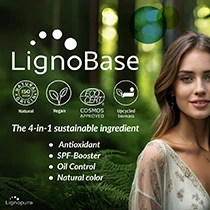Research flags “popular sunscreen” chemical oxybenzone is not coral-friendly

06 May 2022 --- Recent research concludes that oxybenzone, a common ingredient in sunscreens, can be converted into a potentially deadly phototoxin inside anemone and coral cells when exposed to sunlight, resulting in increased damage and maybe death. This is according to a variety of US-based researchers at Stanford University.
Oxybenzone also has an increasingly damaging effect on bleached coral reefs, add the researchers.
“The finding that oxybenzone sunscreen is more toxic to bleached anemones could suggest that it’s also more toxic to bleached corals and would exacerbate the negative effects of warming,” says Djordje Vuckovic, Ph.D. candidate at Stanford University, in a podcast.
Vuckovic and other researchers hope their findings will lead to a better understanding of coral damage caused by sunscreen, which can help develop new policies and sunscreen formulations that are safe.
“We found that oxybenzone caused high mortality of a sea anemone under simulated sunlight including ultraviolet (UV) radiation (290 to 370 nanometers),” share the researchers.
The oxybenzone plague
“As we hear all the time in the news these days, there are these massive bleaching events where corals are expelling their symbiotic algae,” notes Vuckovic.  Vuckovic says that oxybenzone is “very common.”
Vuckovic says that oxybenzone is “very common.”
“A lot of these other sunscreens that are FDA approved, I think there’s a list of about 14 of them, a good maybe five others have a very similar structural motive to oxybenzone sunscreen, where they also have this alcohol group, which you would suspect could get similarly metabolized and replaced by a glucose molecule.”
Vuckovic says that oxybenzone is “very common” – it is likely that the first sunscreen grabbed at a store will most likely contain the chemical in the US as oxybenzone is banned in Hawaii.
The issue of coral-friendly products is coming into sharpened focus as consumers demand more environmentally friendly offerings across the board.
Earlier this year, Holland & Barrett UK banned the sale of all suncare products containing oxybenzone and octinoxate from its stores and website to ensure its suncare range is reef-safe.
Cause: Metabolizing alcohol groups into glucose
Oxybenzone works by absorbing sunlight. When it absorbs the sunlight, it becomes highly reactive but is deactivated by a group of alcohol, helping the chemical emit heat instead. “So it converts sunlight energy into heat energy,” says Vuckovic.
The alcohol group gets metabolized inside the anemones and is replaced with a glucose group, making the anemones photosensitive.
Although scientists are still uncovering the mechanism of how sunscreens damage coral reefs, the researchers say that some localities have already “phased out” ingredients like oxybenzone.  The alcohol group gets metabolized inside the anemones and is replaced with a glucose group, making the anemones photosensitive.
The alcohol group gets metabolized inside the anemones and is replaced with a glucose group, making the anemones photosensitive.
“I generally think for developing safer sunscreens, you would probably want to avoid molecules with these functional groups [alcohol group] and test potential metabolic products that are formed,” suggests Vuckovic.
Increased death rate for marine life
Usually, symbiont algae provide some protection to the host. However, removing the protective algae, like bleached corals due to warming oceans, allows the phototoxin to build up and cause damage.
“Under full-spectrum sunlight, the animals died very quickly within about ten days,” shares Vuckovic. Additionally, he highlighted that the mortality rate was six times faster in the presence of light.
On the other hand, when testing under the no sunlight scenario, the animals lived for 21 days.
Mineral sunscreens
Vuckovic shares that he sticks to mineral sunscreen with zinc oxide or titanium dioxide.
Mineral sunscreens are not lipophilic, and they deflect light, he justifies. “Lipophilic means that they’re not trying to sneak into your skin.”
The deflection of light is why mineral sunscreens are known to leave a white sheen on the skin.
Other alternatives include an anti-aging and coral-safe methylene blue-based (MB) sunscreen Bluevado SunFix.
Edited by Venya Patel












